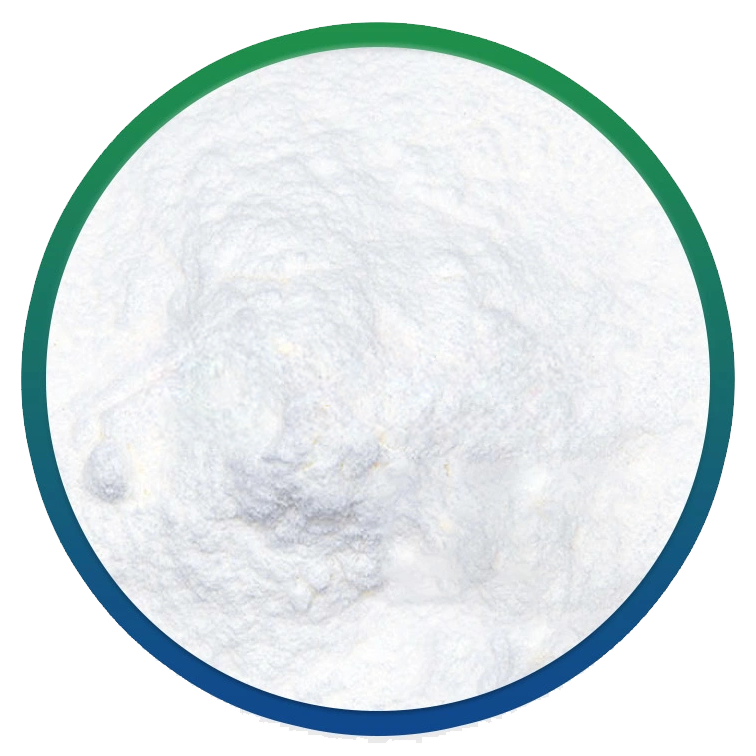Product Description
2,6-Dichloropyrazine CAS 4774-14-5
-
4774-14-5
-
-
Entrepreneur
-
White powder
-
99% Min

Product Name: 2,6-Dichloropyrazine
Cas No.: 4774-14-5
Molecular Formula: C4H2Cl2N2
Molecular Weight: 148.98
Appearance: White powder
Density: 1.493
Purity: 99% Min
Solubility: Soluble in ethanol and methanol.
Boiling point: 122 °C / 40mmHg
Melting point: 55-58 °C
Flash point: 230°C
Vapour: 0.9±0.3 mmHg at 25°C
Refractive index: 1.559
SMILES: ClC1=NC(Cl)=CN=C1
InChI Key: InChIKey=LSEAAPGIZCDEEH-UHFFFAOYSA-N
Other Names: Pyrazine, 2,6-dichloro- / m-Dichloropyrazine
Description:
2,6-Dichloropyrazine, also known as m-Dichloropyrazine or 'Pyrazine, 2,6-dichloro-', is a highly reactive compound with a wide range of applications in various fields, including pharmaceuticals, agrochemicals, and material science. It has been extensively used as an intermediate in the synthesis of many different types of compounds, and it is also used as a starting material for the production of agrochemicals, including herbicides and pesticides. The compound's reactivity makes it an important tool in organic synthesis, and it is often used as a versatile building block that allows researchers to access a wide range of different organic compounds.
Features:
1. Chemical properties: It is a chlorinated heterocyclic compound with a pyridazine ring structure. The presence of chlorine atoms contributes to its reactivity and chemical behavior.
2. Melting and Boiling Point: The compound has a specific melting point and boiling point, which determine its physical behavior during heating or cooling processes.
3. Solubility: Solubility: The solubility of 2,6-Dichloropyrazine varies depending on the solvent used, and it may exhibit different solubility characteristics in different organic or inorganic solvents.
3. Reactivity: 2,6-Dichloropyrazine can participate in various chemical reactions and serve as a building block or precursor in organic synthesis. Its reactivity can be harnessed to create new compounds or modify existing chemical structures.
Applications:
1. Pharmaceutical Intermediate
2,6-Dichloropyrazine is used in the preparation of pyrazine and pyridine compounds as ATR kinase inhibitors. It is also used in the synthesis of oxacalixarenes containing nitrogen heterocycles. It also finds application in the synthesis of sulfaclopyrazine (Sulfaclozine).
2. Agrochemicals
Agrochemicals: 2,6-Dichloropyrazine is utilized in the production of agrochemicals, including pesticides and herbicides. It can act as a key component or starting material in the synthesis of active ingredients that help protect crops from pests, diseases, and weeds. It can also be used as an intermediates for livestock health medicine.
3. Chemical Research
The compound is employed in chemical research and laboratory settings as a versatile building block. Its reactivity and ability to undergo various chemical transformations make it valuable in the synthesis of new molecules and materials.
4. Dye and Pigment Industry
2,6-Dichloropyrazine can be utilized in the production of dyes and pigments. It can contribute to the creation of specific color properties or act as a precursor in the synthesis of colorants used in various applications, including textiles, inks, and coatings.
5. Polymer Science
It can be incorporated into polymer formulations as a reactive or functional component. The presence of 2,6-Dichloropyrazine in the polymer structure can impart specific properties such as improved adhesion, crosslinking capability, or modification of physical and chemical characteristics.
6. Other Applications
The compound may have applications in other areas such as electrochemistry, materials science, and organic synthesis, where its unique reactivity and chemical properties can be harnessed for specific purposes.
Storage: Keep in dark place, Sealed in dry, Room Temperature
Package: 50kg/bag or as per your particular request.